Ben Flatman talks to RIBA presidential candidate Duncan Baker-Brown about the climate emergency, student debt and remembering that architecture can be fun
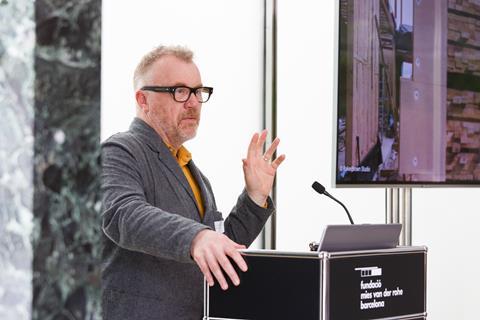
Duncan Baker-Brown runs a small regional practice in Cooksbridge, just north of Lewes in East Sussex and splits his work time between his business and a teaching job at the University of Brighton. His earliest direct contact with RIBA came in an unconventional form early in his career when he and fellow students staged an occupation of the Portland Place HQ building in the late 1980s. “I was part of a student group that were protesting against plans to close three schools of architecture”, he explains. “But that was more than 30 years ago.”
Things have moved on, and while Baker-Brown has perhaps mellowed, he still retains a strong streak of his early campaigning zeal. Since winning a RIBA 1994 House of the Future competition, with a design for a sustainable dwelling, Baker-Brown has been one of the leading advocates for low-carbon architecture and retrofit - the course he runs at Brighton has been teaching young architects how to reuse existing buildings for the last 20 years.
In the 1990s, as Baker-Brown Mackay (later BBM), his practice won a string of design competitions before being appointed to work on the Greenwich Millennium Village, and was instrumental in bringing an octogenarian Ralph Erskine onto the project. “We were the sustainability people, and we were chairing the innovation task force for the project for three or four years”, he says. “We were visioning what urban sustainability was.”
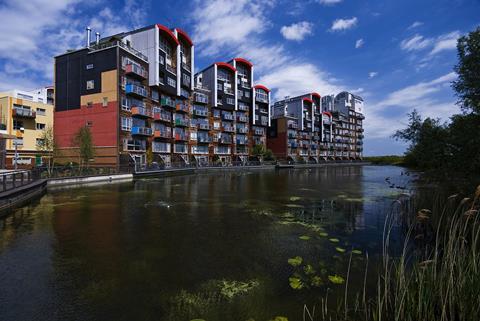
He describes himself as having had an ongoing but slightly distant relationship with the RIBA, up until a few years ago. “As one of those regional small practitioners who taught and researched and practised, I did sort of wonder what the RIBA really did”, he says.
In 2021 he decided to get more involved with the RIBA Council. “Since then, I’ve got more and more enthused about the institution”, Baker-Brown explains. “I was really impressed with Simon Allford’s presidency and equally impressed, for different reasons, with Muyiwa Oki’s presidency.
“I just think the direction of the RIBA is really positive. It has great employees and so I want to work with these people more. It’s quite exciting - I’ve gone to the last two COPs representing the RIBA and I’ve seen how the institute’s name really opens doors.
“When representing RIBA, we were given real access, so it’s been a great platform from which to advocate for greater levels of climate literacy”, Baker-Brown says. “I’ve been doing that for 30 years anyway, but I think there’s a lot I can bring to this role, which is why I’m running for president.”
There have been major changes to RIBA’s governance over the last few years, with some executive powers taken away from the president and put in the hands of an executive board. Why seek election to a position that only lasts two years and has less real power to set RIBA’s direction than some members might assume?
“We’ve got really good people involved on the board, and an excellent CEO”, he says. “So, I think the changes actually work pretty well.
“I also think it’s great having a current president [Muyiwa Oki] who is an activist”, says Baker-Brown. “For me, it feels that as president I could just carry on doing what I do anyway.
“I already do two or three public speaking appearances a week”, he explains. “I’m an advocate for the industry and for a climate literate version of the industry in particular.
“I’m actively involved in education and I’m also an employee of the University of Brighton”, he adds. “And last year I spent six months in a redundancy pool, so I know what it’s like to fight for your job, not be paid what you want and to work with ever diminishing resources.
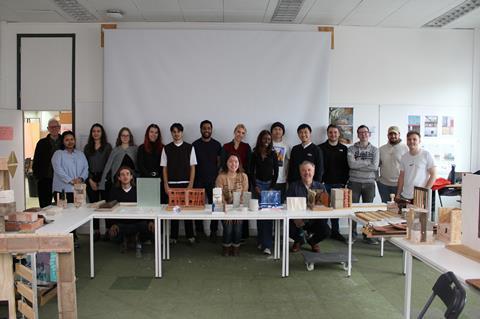
“I see the students having to hold down part-time jobs while doing full-time courses. So, I have a lot of sympathy for the challenges faced by students, and for young architects who are saddled with debt and are on low salaries.
“I’ve got a good overview of the main issues that our profession is facing at the moment and I’ve got ideas about how to get beyond them.”
Given voter turnout at presidential elections has been low and falling for years, why does he think RIBA is failing to engage with its membership?
“It’s sort of always been like that”, says Baker-Brown. “I’ve personally made a big effort to engage with the RIBA and I’m really pleased I did. It was worth it.”
“But I think we’ve seen the RIBA regions get less funding and less staff. So, we’ve got an opportunity to reengage. And I think that’s where there’s a bit of a different message from me because I’m not London-based.
“And if I become president, it’ll be while Portland Place is closed for refurbishment, so I want to be the president that bases myself in the regions.
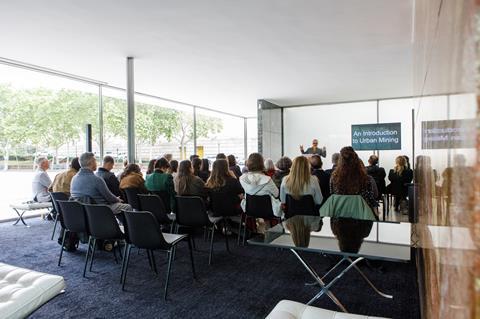
“I travel every week across the UK giving talks. So, for me, having to go to Liverpool or Newcastle or Saint Ives, or wherever, would just be like normal life.
“I want to give the opportunity for the regions to shine.”
Many members express frustration that they feel RIBA doesn’t serve them. Is RIBA destined to satisfy no one, given that the membership, which goes from salaried employees to sole practitioners, through to principals of multimillion turnover consultancies, have radically different expectations? And does perhaps the RIBA charter need to be reworded to prioritise its members?
“Changing the charter is quite difficult and can take perhaps three years”, says Baker-Brown. “But there is a draught rewrite of the charter that the Climate Action Expert Advisory Group proposed last year.
“One of the things I’d be looking to change is to really put planet and people at the core of it all, because I think at the moment you’re right, the charter doesn’t do that.”
And what about the tension between the different types of members?
“Well, I do think advocating on behalf of small businesses is part of the core work that RIBA should be doing”, he says.
“But I think what’s been interesting with Muyiwa as president is that we’ve been having these presentations in Council from different groups. So salaried architects have made it very clear what their challenges are.
“And these discussions have gone both ways. So, the salaried architects have also heard from employers what their challenges are, and overall, we know you can’t burn the candle at both ends.
“The fact is that practices aren’t earning enough money to pay people properly. That’s the bottom line.
“But what I’m really passionate about is changing the way they practice – diversifying to increase their workload and doing the right thing for the planet as well. So, from my point of view, we’re in a transformative time.
“I want RIBA to lobby for this transformation, to make it genuinely a low consumption industry in terms of resources, which means low carbon, which means we meet net carbon targets.
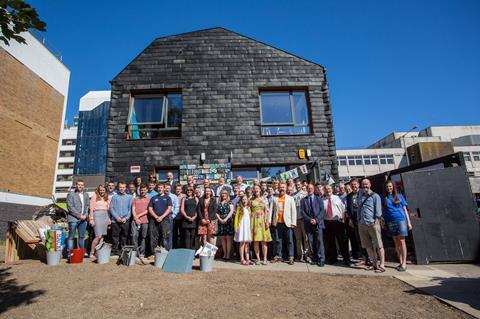
“The built environment consumes half of all natural resources mined and harvested every year in this country. It accounts for 63% of the waste flow in the UK and across Europe it’s 35 to 45%. We are particularly wasteful in this country.
“We could do a lot for the environment by learning how to do our job a bit differently. Collectively we have the knowledge and it’s a huge work opportunity.”
What else would you prioritise as president?
“I’d spend more on communications. I just don’t think we spend enough on comms and I don’t think we do it in the right sort of way.
“We’ve got to make people more aware of what architects can do. I’ll be lobbying for embodied carbon benchmarks to be put into building regulations. As soon as that happens, what rolls out is a sustainable retrofit industry which needs to be creative and adaptive, and that’s where architects come on board.”
Is the Principal Designer role, as Jack Pringle suggested a couple of weeks ago, an opportunity for architects to become the lead consultant and “get back to conducting the design orchestra” again?
“I think the principal designer role is really good news. It is a huge opportunity and I think we can take advantage of that.
“Although this whole conductor thing is the language of the past. We’re collaborators, and we’ve got to be clear about what we bring without using pompous language.
“But I have to say with the updated Building Safety Act, Principal Designers have got a lot of responsibility and we’re now in the world of do you want that responsibility on your particular shoulders as the architect, or do you want to let someone else take that responsibility?”
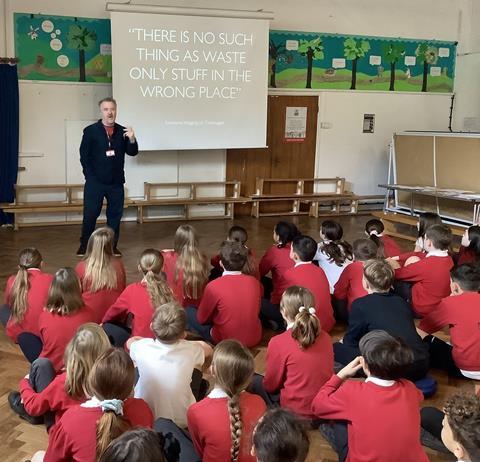
In relation to the climate emergency, is there currently too great an expectation that architects can convince every client that they should be doing a retrofit project? Joe Morris recently told BD that he felt expectations of what architects could achieve, without legislation to back them up, were unrealistic.
“Architecture if difficult. I’m not dismissing anything Joe said - he is right because we do need the legislation. Until we’ve got legislation architects will continue to be turning up to a party where the building has already been demolished.
“But we’re about to enter a world where retrofit first will make sense because you’ll be penalised for demolition.
“We just need to equip ourselves with the knowledge, so we understand how to retrofit first and how to adopt a circular approach to materials and the economy. We have the knowledge within our membership, but we need to raise awareness.”
Are ARB’s proposed architectural education reforms on the right track, and why is change needed in terms of education and training?
“I think we’ve got to pretty quickly change the student experience. At the moment it takes too long to qualify as an architect. The route is primarily: study full time, acquire loads of debt, work an eight day week.
“We can’t carry on like that. We’ve got to acknowledge the challenges that our students are facing.
“I’ve got a lot of time for apprenticeship schemes. I did my undergraduate studies at London Met on the part time course. That was in the 80s.
“It’s the best way in. So, I would say we’ve got to put our resources behind apprenticeships, and we need to encourage our members to support the apprenticeship schemes. There have got to be incentives for them to do that.
“But I’m also very focused on the reality right now. I’ve got a postgraduate studio at the moment and the majority of my students are working. Most of them are doing the full time course and having to work three or four days a week to pay their bills.
“They’re talented students getting middling grades because they can’t put the time in. And they’re knackered as well. They’re just rinsed.”
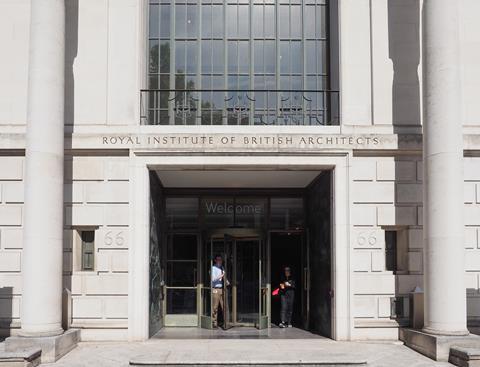
What do you make of the proposed ‘House of Architecture’, the proposal unveiled while Simon Allford was president to refurbish Portland Place, and turn it into a cultural venue for architecture?
“I had to get my head around it in terms of am I supportive. But you just have to walk around the building and you realise, ‘Oh my God, it really needs this doing to it’.
“What most people see is all front of the house, isn’t it? But then you go behind some of those doors and it has not had any attention since the 1950s and even then it was just a lick of paint.
“So it is creaking, it’s got single glazed windows that don’t close, and it hasn’t really got a heating system that works. And honestly you sometimes walk into rooms and they still smell of cigar smoke. You can’t believe it.
“And I thought that Simon Allford’s vision for it was what it needed to be - make it something that you want to travel to and make it more accessible.
“I know as a student and a young architect, it’s quite an imposing building. I didn’t want to go there. I was like, well, it’s not for me. And then when you have a good look, it’s full of inappropriate racist art as well. Just get rid of that.
“I’m most interested in it being a project that’s about accessibility and opening up that building to everyone and making it feel welcoming.
“The project also includes the proper digitisation of the million artefact collection that the RIBA’s got. Of drawings, books, models, photographs. So, it’s about other things as well as the building itself.”
One final message?
“I think there are two other great candidates, but I think I’m the one that’s actively engaged with the big issues that confront the profession at the moment.
“I think I’m an authentic, informed voice, whether you’re talking about education or the climate emergency or small practices, young architects and students.
“I think I’ve had a privileged and lucky 30 years doing a bit of everything. And I’ve now got a lot of experience doing a bit of everything. So, I think my time has come.
“And, you know, I think it’s a lot of fun as well. I think architecture is a lot of fun. We have got to remind ourselves of that.
“It is difficult. But I often say that designing a bad building is as difficult as designing a good building. You’ve still got all that work to do and then it looks dreadful. But it’s not mining - there are more tough jobs out there.
“So, you know, we’ve got to remind ourselves we are in a privileged position being able to do this and I just think we want more people involved.”
>> Also read: Funmbi Adeagbo: ‘Architects need to get their hands dirty. We need to be thinking more like builders’
















2 Readers' comments